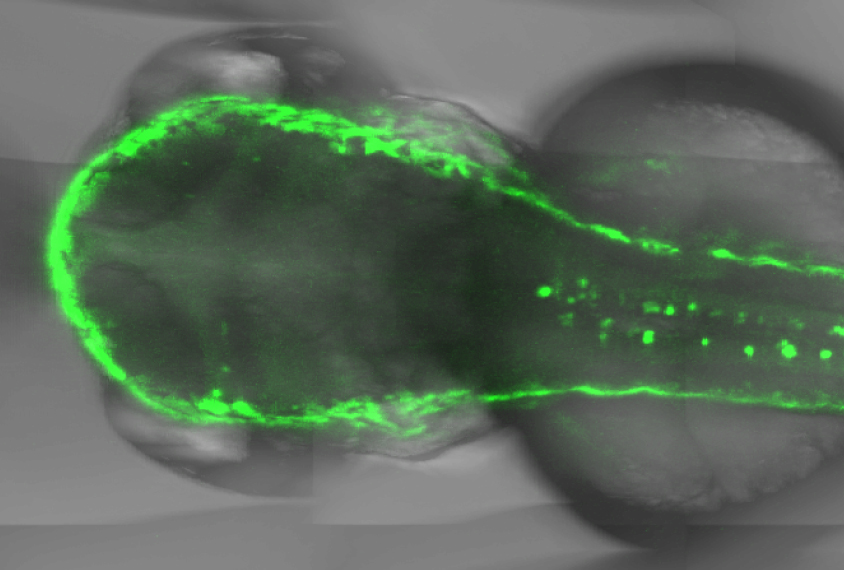
THIS ARTICLE IS MORE THAN FIVE YEARS OLD
This article is more than five years old. Autism research — and science in general — is constantly evolving, so older articles may contain information or theories that have been reevaluated since their original publication date.
A fusion of two proteins can silence the activity of specific neurons in the zebrafish spinal cord1.
The fused pair, called GFE3, binds to and destroys synapses, the connections between neurons. Neurons regenerate these damaged synapses within days, showing that neurons can rebuild their connections.
In the study, the researchers used GFE3 to dial up brain activity by destroying inhibitory synapses, which normally quiet cells in the brain and spinal cord. Scientists could also use the technique to dial down brain activity by removing excitatory synapses, which activate cells in the central nervous system.
The tool, described in June in Nature Methods, may help researchers parse the effects of an imbalance in excitatory and inhibitory signals in the brain. This type of signaling imbalance is thought to underlie autism.
To make GFE3, the researchers relied on a class of proteins called FingRs. These proteins stick to particular targets and render them green under ultraviolet light. The researchers focused on a FingR that sticks to gephyrin, a protein found at inhibitory synapses. (Other FingRs stick to proteins found at excitatory synapses.)
The researchers tacked the gephyrin FingR to an enzyme called E3 ligase, which flags proteins for destruction by the cell. The fused product, GFE3, turns inhibitory synapses fluorescent green. Researchers can watch the synapses’ destruction as a gradual decline in fluorescence.
Expressing GFE3 in the spinal cord of zebrafish silences neurons required for tail flicking, and prevents the fish from moving the tips of their tails back and forth.
The researchers also delivered GFE3 to rat neurons after modifying it so that the proteins are expressed only in the presence of the antibiotic doxycycline. When they turned on GFE3 with doxycycline, gephyrin gradually degraded over 24 hours, as did the inhibitory synapses.
When the researchers removed doxycycline, gephyrin — and the synapses — reappeared within 48 hours.
By joining the discussion, you agree to our privacy policy.